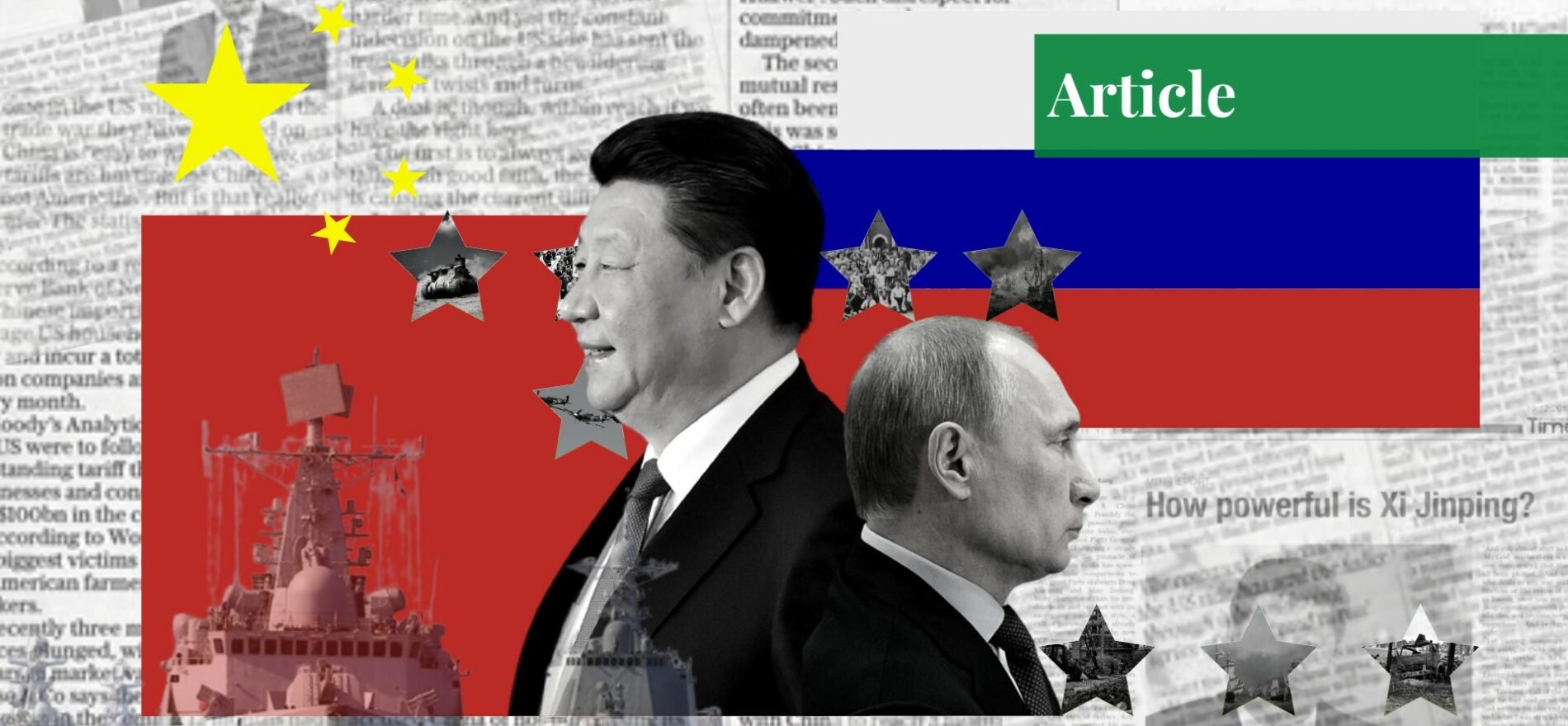Mr. Aamir Junaid is a student of politics and international relations at the London Metropolitan University, London, United Kingdom. He's a writer at South China Morning Post, Global Village Space, the Friday Times, Daily the Climax, Balochistan Express, and the Balochistan Times. He has worked as a visiting lecturer at the Department of International Relations at Government College University Faisalabad and at the University of Education Faisalabad Campus, Pakistan.
China-Central Asia Summit
Five Central Asian presidents, who had gathered for the first China-Central Asia Summit, were honoured on May 18 in a pompous ceremony by Chinese President Xi Jinping in the elaborate Tang Paradise theme park in Xi’an – the centre of the old Silk Road. Interestingly, the summit coincided with the G7 conference of developed nations in Hiroshima. According to China’s state-run Global Times, the G7 “speaks the language of an outmoded Cold War mentality,” while the Xi’an meeting prioritised the “promotion of cooperation and inclusiveness.”
Xi praised the summit for heralding “a new era of China-Central Asia relations” in his opening remarks. To maintain peace in the region, Xi stated that “China is prepared to assist Central Asian countries strengthen capacity building on law enforcement, security, and defence.” After two years of COVID-19 border restrictions, several commercial agreements reached the summit, indicating that China is now again available for business.
G7 leaders discussed the need to “reduce critical dependencies” on China in Hiroshima. With a recent internal memo urging European Union member states to “de-risk” their dependency on Beijing and “prepare” for a crisis over Taiwan, Europe has also been growing more sceptical of China. But in the meantime, the Xian summit assisted China in consolidating political support for the “reunification” of Taiwan with China and for constructing infrastructure that would diversify Beijing’s energy supplies away from Western ports and sea routes in the event of a global battle.
China-Central Asia Economic Ties
China actively promotes a viable alternative to the current United States-led order as it solidifies its control in Eurasia. However, it is positioning itself as a rival to the US and Russia, which it progressively seeks to oust from Central Asia. China has become Central Asia’s most considerable economic power. By the end of 2022, total Chinese investments in the area had increased from $40 billion in 2020 to over $70 billion. In the 1990s, Russia accounted for 80% of commerce in the area; today, less than two-thirds of Beijing’s trade comes from Moscow.
A rising disparity between China and Central Asia lurks beneath these large numbers. China was reportedly responsible for 52 percent of Tajikistan’s external debt and 45 percent of Kyrgyzstan’s as of 2020. In the meantime, Chinese consumers are responsible for 75% of Turkmenistan’s exports. Aside from weakening Beijing’s legitimacy, the mounting debt loads have been associated with high-level corruption scandals and have led to political instability.
Central Asia’s Sinophobia
In fact, there is a fair amount of Sinophobia in Central Asia, especially in Kazakhstan and Kyrgyzstan. According to study results, 35% of Kyrgyz and 30% of Kazakhs have a terrible opinion of China. There have been more demonstrations against China’s expanding influence in the area, which is seen by some as displacing locals from their jobs, harming the environment, and constituting a more considerable effort to “colonise” the area. The Oxus Society’s findings show that from January 1, 2018, to June 30, 2021, Kazakhstan saw 241 rallies against China. However, more than half of these were connected to a long-running demonstration by the relatives of those held in Xinjiang’s detention centres.
Beijing has asked Central Asian governments for support for its policies amid the rising opposition to China’s severe practises in Xinjiang towards Uighurs and other ethnic Kazakhs and Kyrgyz, as well as the widespread Sinophobia in the region. Despite providing a statement of support for Beijing in June 2019, Kyrgyzstan and Kazakhstan declined to sign a letter supporting Beijing’s stance to the UN the following month. Uzbekistan and Kazakhstan, however, decided to vote against a UN probe into China’s violations of Xinjiang’s human rights in October 2022. The topic was also conspicuously missing from the discussions in Xi’an last month.
Security & Sino-Russian Competition
China chose to connect mainly with Central Asia through the Shanghai Cooperation Organisation (SCO), which also has Russia as a member, for the first two decades following the fall of the Soviet Union in 1991. However, China has been developing its own systems to cooperate with its Western neighbours more and more throughout the Xi Jinping era. The Xi’an conference, hosted by China plus the C5 and excluding Russia, is a striking illustration of Beijing’s increasingly independent course.
While China and Russia declared a “no limits” alliance in February 2022 and promised to cooperate to stop what they refer to as “colour revolutions” and outside involvement in Central Asian matters, it is evident that Beijing wants to usurp Moscow in its old empire. The connections between China and Central Asia, which began with Xi’s introduction of the Belt and Road Initiative (BRI) in an October 2013 address in Kazakhstan, have in many respects been the focus of Beijing’s policy of heightened global assertiveness, which its media refers to as the “New Era.”
China unveiled three new initiatives the previous year: the Global Security Initiative, the Global Civilization Initiative, and the Global Development Initiative. These initiatives propose an alternative international relations model to Western liberal principles. For instance, Beijing’s opposition to organisations like NATO is manifested in the Global Security Initiative, which Beijing supports because the West is mired in a “Cold War mentality”.
While Moscow remains the region’s primary arms supplier, accounting for around 50% of all transfers, China’s part of the region’s arms imports has climbed from 1% in 2010 to 13%. China has been covertly constructing a network of military sites along the Tajikistan-Afghanistan border since 2016. The terrain has also undergone significant upheaval due to unrest in Kazakhstan in January 2022 and Russia’s invasion of Ukraine. China reportedly provided support in response to violent protests in Kazakhstan. China’s recent proclamation of support for Kazakhstan’s territorial integrity and national independence and Xi’s visit to Kazakhstan in September 2022 suggests a deeper Chinese security engagement.
In a time when Russian rhetoric is becoming increasingly neo-colonial, the Russia-Ukraine war has increased Kazakhstan’s elites’ dependence on China. Former Russian President Dmitry Medvedev referred to Kazakhstan as an “artificial state” in August 2022, echoing Vladimir Putin’s statement from 2014 that the Kazakh people had “never known statehood” before the fall of the Soviet Union. In recent months, well-known Russian nationalist commentators have made similar claims.
These threats are felt in Kazakhstan, where 16% of the population is of Russian ethnicity. Most Russians live in the Kostanay and North Kazakhstan areas. These regions, according to Russian nationalists, have historically been a part of Russia. President Xi subtly criticised Russia’s sabre-rattling in northern Kazakhstan, stating that China supports “ethnic harmony” with his Kazakh counterpart in Xi’an.
Russia is said to have weakened its 201st Military Base, which had an estimated 7,000 personnel stationed at three installations in Tajikistan as of 2021, to concentrate on the conflict in Ukraine. The 4th Battalion Tactical Group’s column was said to have been destroyed by the Ukrainian army in April while operating out of this camp. We have received confirmation from numerous sources that over 2,000 troops and at least 30 tanks have been redeployed to Ukraine. Russian troops stationed in Kant, Kyrgyzstan, have been redeployed in at least 500-strong numbers.
Russia dominates the Collective Security Treaty Organisation (CSTO), which has also largely failed to support member Armenia in its conflicts with fellow post-Soviet Azerbaijan or to end the violent territorial disputes between Kyrgyzstan and Tajikistan. Russia’s obligations to its allies have been significantly compromised as a result. In light of this, the gathering in Xi’an was highly symbolic. It gave the impression that China is presenting itself as the preferred partner for Central Asia, providing the region with what Russia cannot.
If you want to submit your articles, research papers, and book reviews, please check the Submissions page.
The views and opinions expressed in this article/paper are the author’s own and do not necessarily reflect the editorial position of Paradigm Shift.



















